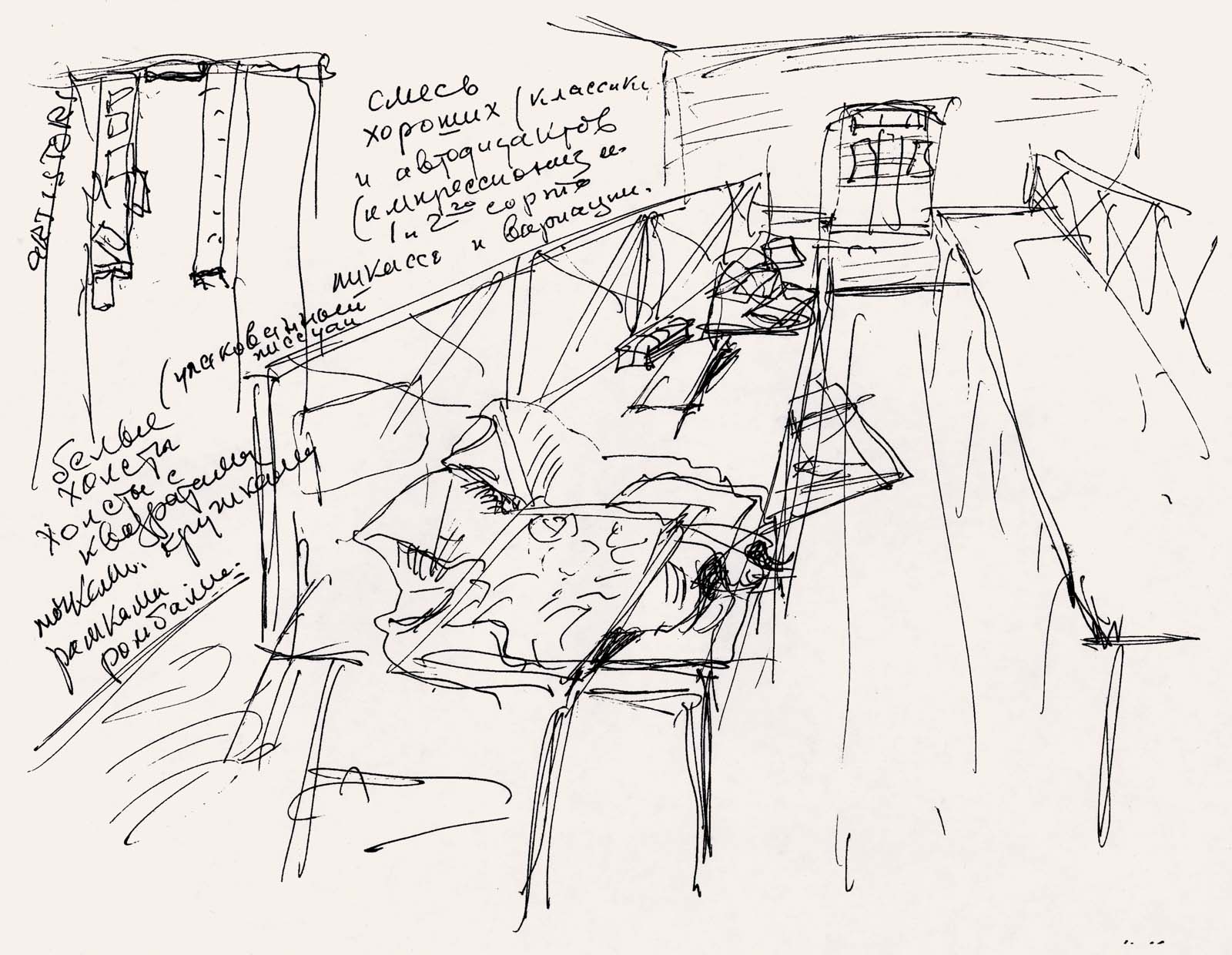Not Everyone Will Be Taken Into the Future
with Emilia Kabakov
YEAR: 2001
CATALOGUE NUMBER: 160
PROVENANCE
Private collection, Salzburg
On long-term loan at MAK – Österreichisches Museum für Angewandte Kunst / Gegenwartskunst (MAK – Austrian Museum of Applied Arts / Contemporary Art), Vienna
NOTES
The permanent installation consists of the paintings nos. 381, 385–387
EXHIBITIONS
Esposizione Internazionale d’Arte, La Biennale di Venezia (49th International Art Exhibition), Arsenale, Venice, Italy
Platea dell’Umanità / Plateau of Humankind / Plateau der Menschheit / Plateau de l’Humanité, 49. June 10 to November 4, 2001
Tate Modern, London, United Kingdom
Ilya and Emilia Kabakov, Not Everyone Will Be Taken into the Future, October 18, 2017, to January 28, 2018.
The State Hermitage Museum, St Petersburg and the Tretyakov Gallery, Moscow, Russia
Ilya and Emilia Kabakov, Not Everyone Will Be Taken into the Future, 2018.
Tel Aviv Museum of Art, Tel Aviv, Israel
Tomorrow We Fly, July 17, 2023 to March 2, 2024.
DESCRIPTION
The viewer, upon entering the space, encounters a fence and a bridge. In order to be able to see what is behind this fence, he has to walk onto the bridge. From the bridge, he sees, in the center, a fragment of “The Last Train Car,” which is “leaving” from two wooden platforms (trucks). Paintings and rolls of drawings are on one of these platforms. The same kinds of paintings are also lying scattered on the ground. On the train car, we see a running electronic text (in red, in Jenny Holzer’s style) that reads: “Not everyone will be taken into the future.” The text, running from left to right, is repeated in different languages: English, Italian.
The viewer’s point of view from the bridge is that of a bird in flight, i. e., it is a view from “another space,” from the future, because the train has already left.
The paintings and the images on them belong to the authors of the installation. There is “no critical escapade aimed at anyone in particular.” This is the problem of the authors themselves.
CONCEPT OF THE INSTALLATION
This installation is dedicated to a problem that is very topical for the situation in the contemporary art world today: What will happen to artists and their works in the very near, and not so near, future? How will they be accepted and understood by the new viewer of the future, the new art critic, the new collector, the new curator?
In our mind, this problem today is masked by the dominant reality, the demand to be “contemporary,” no matter what! The demand “to exist today” overwhelms the question: What will happen to these works tomorrow?
This is a personal problem for every artist: What is more important, to have his works understood and accepted today, or to wish for them to live into “tomorrow,” and what is the difference?
Images
Literature



















